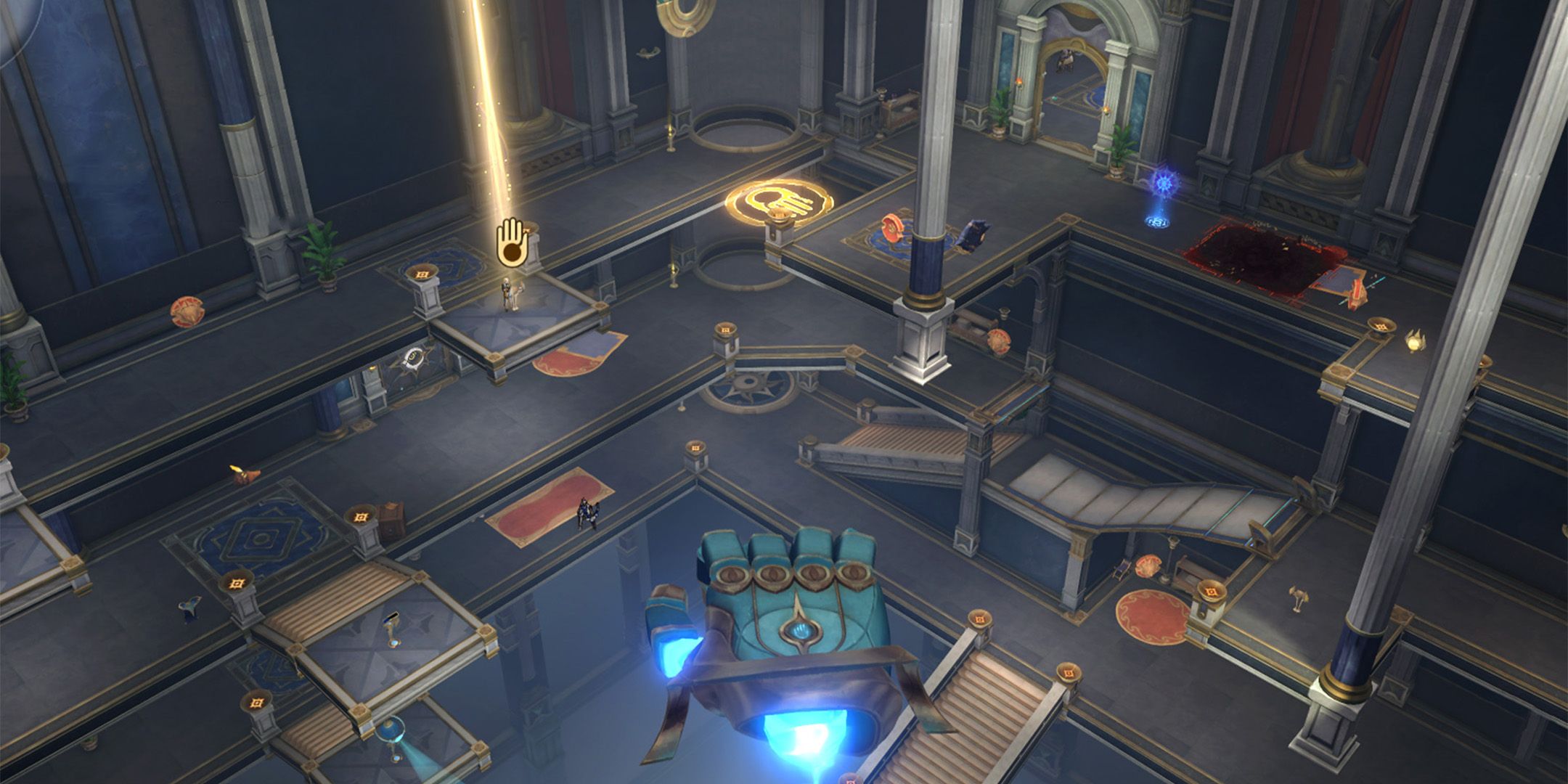0 Comments
0 Shares

Directory
Directory
-
Please log in to like, share and comment!
-
 WWW.VG247.COMMarvel Rivals newbies are drawing up handwritten playbooks to help teach themselves the ideal Venom strategy: arrive, do damage, then yeet yourself off a ledgeSounds RightMarvel Rivals newbies are drawing up handwritten playbooks to help teach themselves the ideal Venom strategy: arrive, do damage, then yeet yourself off a ledgeFlawless tekkers, no notes.Image credit: NetEase News by Mark Warren Senior Staff Writer Published on Jan. 21, 2025 It can be hard getting into a game like Marvel Rivals when everyone else has already had a full season to get up to speed, pick which heroes fit their playstyle, and learn how to best deploy the attacks at their disposal. It's ok, though, one newbie with a buddy on Reddit has seemingly found a way to help themselves learn the ropes - drawing up handwritten playbooks for characters.To be fair, I get it. You're aware that you've got a lot to learn so you don't get merked by some weirdo who's playing as a Thomas the Tank Engine that's technically just a mod that makes Jeff the Land Shark do some very trainy cosplaying, so you do all the prep you can.To see this content please enable targeting cookies. That seems to be the mindset of a buddy of r/marvelrivals user KaijuBlaze, who's drawn up a "playbook" to help them remember the steps they've been told to follow in order to not be a crap at playing Venom. It's clearly a piece that belongs in the Louvre, with little images to help them remember the six steps their mate's informed them make up the ideal Venom assault."The idea is he doesn't play these types of games and knows nothing about Marvel, so we're gonna do SUPER simple guides to help him get used to how they characters are supposed to operate," KaijuBlaze explained. Nice one.As you can see below, the plan is roughly as follows: swing in, dive like Ralph Wiggum did through The Simpsons front window that one time when he was a brick for a frenzied arrival, activate cellular corrosion, "attack until low health", then press E, and swing your bottom out of there. Heal up, rinse, repeat. Told my buddy how to "play" Venom and this is the playbook he wrote up byu/KaijuBlaze inmarvelrivalsTo see this content please enable targeting cookies.Naturally, the Rivals regulars were quick to suggest some minor improvements to this plan. "I rarely ever swing in because you can run on walls and just dive directly from the wall," wrote one, "Whereas if you swing in and everyone turns, theres a good chance they can pump more then 2k damage in less then 8 seconds." The playbook was duly updated.One of the players on the subreddit has even decided to give the instructions an in-game trial run themselves to make sure this newbie was on the right path. They pretty much followed all the steps to a T, aside from the three they kinda didn't, and ended by swinging themselves right off a ledge to their death, because it's funny and also because - listen in KaijuBlaze's buddy - you're not at risk of being killed by the enemy if you've already died to gravity. The more you know.I don't know about you, but I think if these hand-drawn playbooks start to do well in Rivals, NetEase might need to ban getting your paper and pencils out as strictly as it recently did keyboard and mouse adapters. Unfair hardware advantage, you know, the ability to draw.0 Comments 0 Shares
WWW.VG247.COMMarvel Rivals newbies are drawing up handwritten playbooks to help teach themselves the ideal Venom strategy: arrive, do damage, then yeet yourself off a ledgeSounds RightMarvel Rivals newbies are drawing up handwritten playbooks to help teach themselves the ideal Venom strategy: arrive, do damage, then yeet yourself off a ledgeFlawless tekkers, no notes.Image credit: NetEase News by Mark Warren Senior Staff Writer Published on Jan. 21, 2025 It can be hard getting into a game like Marvel Rivals when everyone else has already had a full season to get up to speed, pick which heroes fit their playstyle, and learn how to best deploy the attacks at their disposal. It's ok, though, one newbie with a buddy on Reddit has seemingly found a way to help themselves learn the ropes - drawing up handwritten playbooks for characters.To be fair, I get it. You're aware that you've got a lot to learn so you don't get merked by some weirdo who's playing as a Thomas the Tank Engine that's technically just a mod that makes Jeff the Land Shark do some very trainy cosplaying, so you do all the prep you can.To see this content please enable targeting cookies. That seems to be the mindset of a buddy of r/marvelrivals user KaijuBlaze, who's drawn up a "playbook" to help them remember the steps they've been told to follow in order to not be a crap at playing Venom. It's clearly a piece that belongs in the Louvre, with little images to help them remember the six steps their mate's informed them make up the ideal Venom assault."The idea is he doesn't play these types of games and knows nothing about Marvel, so we're gonna do SUPER simple guides to help him get used to how they characters are supposed to operate," KaijuBlaze explained. Nice one.As you can see below, the plan is roughly as follows: swing in, dive like Ralph Wiggum did through The Simpsons front window that one time when he was a brick for a frenzied arrival, activate cellular corrosion, "attack until low health", then press E, and swing your bottom out of there. Heal up, rinse, repeat. Told my buddy how to "play" Venom and this is the playbook he wrote up byu/KaijuBlaze inmarvelrivalsTo see this content please enable targeting cookies.Naturally, the Rivals regulars were quick to suggest some minor improvements to this plan. "I rarely ever swing in because you can run on walls and just dive directly from the wall," wrote one, "Whereas if you swing in and everyone turns, theres a good chance they can pump more then 2k damage in less then 8 seconds." The playbook was duly updated.One of the players on the subreddit has even decided to give the instructions an in-game trial run themselves to make sure this newbie was on the right path. They pretty much followed all the steps to a T, aside from the three they kinda didn't, and ended by swinging themselves right off a ledge to their death, because it's funny and also because - listen in KaijuBlaze's buddy - you're not at risk of being killed by the enemy if you've already died to gravity. The more you know.I don't know about you, but I think if these hand-drawn playbooks start to do well in Rivals, NetEase might need to ban getting your paper and pencils out as strictly as it recently did keyboard and mouse adapters. Unfair hardware advantage, you know, the ability to draw.0 Comments 0 Shares -
-
Here's a cool Blender-made animation that imitates real camera footage made by a Reddit user known as Yo, or rawrcewas. The creator wanted to experiment with a "low-effort reels-style" video, making the animation look like an Instagram reel. The sequence was rendered in about two hours on a laptop with RTX 2060.
More: https:
https://80.lv/articles/check-out-this-blender-animation-that-looks-like-a-real-video/
#blender3d #b3d #blender #3dart #3danimation #gamedev #indiedev #rendering #renderHere's a cool Blender-made animation that imitates real camera footage made by a Reddit user known as Yo, or rawrcewas. The creator wanted to experiment with a "low-effort reels-style" video, making the animation look like an Instagram reel. The sequence was rendered in about two hours on a laptop with RTX 2060. More: https: https://80.lv/articles/check-out-this-blender-animation-that-looks-like-a-real-video/ #blender3d #b3d #blender #3dart #3danimation #gamedev #indiedev #rendering #render0 Comments 0 Shares 0 -
The Future of AI in Film:
Any Actor, Any Role, Any Time
Imagine swapping any actor or actress into any movie, past or present.
It sounds unbelievable, but it's quickly becoming reality.The Future of AI in Film: Any Actor, Any Role, Any Time Imagine swapping any actor or actress into any movie, past or present. It sounds unbelievable, but it's quickly becoming reality.0 Comments 0 Shares 3 -
 GAMERANT.COMMarvel Rivals Leak Claims a New Vanguard Is on the WayA prominent Marvel Rivals leaker has claimed that The Hood will be coming to the popular hero shooter as a Vanguard. Marvel Rivals is currently in the opening weeks of Season 1: Eternal Night Falls, which features Dracula as the title's main antagonist. While Season 0 took place over the course of several weeks, the developers have stated that a typical full-length season will last for three months.0 Comments 0 Shares
GAMERANT.COMMarvel Rivals Leak Claims a New Vanguard Is on the WayA prominent Marvel Rivals leaker has claimed that The Hood will be coming to the popular hero shooter as a Vanguard. Marvel Rivals is currently in the opening weeks of Season 1: Eternal Night Falls, which features Dracula as the title's main antagonist. While Season 0 took place over the course of several weeks, the developers have stated that a typical full-length season will last for three months.0 Comments 0 Shares -
 GAMERANT.COMIn the Balance Achievement In HSR - How To Activate The Floating Platform In "Abyss Of Fate" JanusopolisArriving at the "Abyss of Fate" Janusopolis during the Heroic Saga of Flame-Chase chapter in Honkai: Star Rail presents Trailblazers with a trial, requiring them to balance the two sides of a scale with the help of the Hand of Zagreus. Once the challenge is complete, players can proceed normally to the next location in Amphoreus.0 Comments 0 Shares
GAMERANT.COMIn the Balance Achievement In HSR - How To Activate The Floating Platform In "Abyss Of Fate" JanusopolisArriving at the "Abyss of Fate" Janusopolis during the Heroic Saga of Flame-Chase chapter in Honkai: Star Rail presents Trailblazers with a trial, requiring them to balance the two sides of a scale with the help of the Hand of Zagreus. Once the challenge is complete, players can proceed normally to the next location in Amphoreus.0 Comments 0 Shares -
 WWW.TECHRADAR.COMHPE investigating claims that hacker breached developer environments, source codeThe company says there is no evidence yet, but it's investigating.0 Comments 0 Shares
WWW.TECHRADAR.COMHPE investigating claims that hacker breached developer environments, source codeThe company says there is no evidence yet, but it's investigating.0 Comments 0 Shares -
 WWW.TECHRADAR.COMCanon's new free app is an easy way to livestream with up to three iPhones or iPadsCanons Live Switcher Mobile app may help streamers manage complex setups from a single phone.0 Comments 0 Shares
WWW.TECHRADAR.COMCanon's new free app is an easy way to livestream with up to three iPhones or iPadsCanons Live Switcher Mobile app may help streamers manage complex setups from a single phone.0 Comments 0 Shares -
 WWW.CREATIVEBLOQ.COMApple's rare U-turn on news alerts is the latest in a string of big-tech AI flopsIt could harm consumer confidence.0 Comments 0 Shares
WWW.CREATIVEBLOQ.COMApple's rare U-turn on news alerts is the latest in a string of big-tech AI flopsIt could harm consumer confidence.0 Comments 0 Shares





